Learn all about the traditional Japanese sashiko pattern jūjitsunagi 十字つなぎ, which means "connected letter ten." | Sashiko Pattern
The sashiko pattern jūjitsunagi 十字つなぎ means “connected letter ten.”
十 jū meaning “ten”, 字 ji meaning letter and つなぎ tsunagi meaning “connection.” This pattern belongs to the moyōsashi family.
Meaning of the sashiko pattern jūjitsunagi
In Japanese, the letter “ten” 十 has the meaning of “being whole” or “being enough.” It also stands for a plentiful harvest or offspring as well as prosperity as a whole.
The number ten is considered a lucky number and frequently associated with the gods in Japanese tradition. Source in Japanese
Especially in this pattern, where each ten connects with another ten, it carries the wish for ongoing prosperity and success. Not just for oneself but also for following generations.
Sounds simple?
The trouble with the sashiko pattern jūjitsunagi
There's more to the pattern than the letter ten
The pattern derives its name from the letter ten, but it also happens to form swastika where the letters connect.
In Japan, that makes the pattern all the more auspicious. The swastika is commonly referred to as manji 卍, which literally means “ten-thousand-letter,” in Japanese. It stands for perpetuity and longevity.
The origin of the letter manji in Japan
The manji made its first appearance in Japan during the Nara period in the 8th century. During this time, Japan adopted the Chinese writing system and with it the letter manji.
The oldest still existing sample is written on the sole of the foot of Yakushi Nyorai (Bhaiṣajyaguru) in the Yakushi-ji in Nara. Source in Japanese
The letter manji in Japanese culture
As mentioned above, when the Chinese writing system was adopted in Japan, the letter manji got introduced.
Some clans used the letter as a 家紋 kamon family crest.
For example the 五瓜に隅立て卍 gokanisumitatemanji “five melons and a manji standing on a corner.”

Or the rather complicated 四つ持ち合い卍 yotsumochiaimanji “four manji holding each other.”

The left-facing manji is commonly used in Japanese maps to point out buddhist temples.
The letter manji in other cultures
The first appearances of swastika date back to at least 10,000BCE and they can be found all over the world.
Swastikas are important symbols in Buddhism and Hinduism. After Buddhism was introduced to China, the symbol was declared as “the source of all good fortune” by Wu Zetian during the Tang dynasty.
Because the words “ten thousand” and “infinity”sound the same as 卍 in Chinese, the letter itself became a symbol for immortality and infinity. Source
Up until the Nazi regime in Germany misused the symbol for their ideology, the symbol or letter had only positive associations.
Manji versions
There are two versions of the letter. One is facing left 卍, the other is facing right. While the left facing one can be easily typed when setting the input language to Japanese, the right facing one does not show up.
I assume the reason for this is the usage of the right-facing swastika by the Nazis.
While both letters can be simply referred to as manji, most Japanese people will call the left-facing one manji, while calling the other one kagijūji (literally “hook cross”).
The letter manji today
Before the 2020 Olympics in Tokyo, it was debated whether Japan should abolish the use of manji in maps due to its negative image in Western culture. The movement didn't bear fruit and maps use a swastika to point out buddhist temples, just as they used to since around 1880. Source: 『地図記号のひみつ』著: 今尾恵介 Chizukigō no himitsu by Imao Keisuke
While it is illegal to display right facing swastika in countries like Germany, Austria and very recently (June 2024) parts of Switzerland, the swastika is an important symbol of good in other parts of the world.
Even in Germany, the display of a swastika is not illegal in a religious context.
TLDR
The pattern results in swastika. Depending on a person's history and beliefs, they may feel offended by it.
The pattern can result in either left-facing or right-facing swastika. Both may be frowned upon in Germany, but it's probably safer to go for the left-facing pattern. Also, it's always good to be able to explain cultural backgrounds if you don't want to be misunderstood.
So, in case you didn't read the cultural background story above, I suggest you read through it just once before you finish the pattern. Or better, before you start stitching.

Stitching directions for the sashiko pattern jūjitsunagi
The jūjitsunagi pattern is extremely beginner-friendly! Just follow the lines as if you were walking up or down some stairs.
Make sure that one stitch either ends or begins at a corner so the corners look sharp. Other than that, there's not much you can do wrong.
The traditional technique of using a palm thimble really shines here. Always load all the stitches up to a corner onto your needle and then push it through. You'll probably be surprised how fast you finish.
I recommend starting with a small project, like a handkerchief or kitchen cloth, to get comfortable with the flow.
This pattern is also a great choice if you're drawing a pattern yourself for the first time! These are my recommended tools if you want to give it a go.






Comments ()